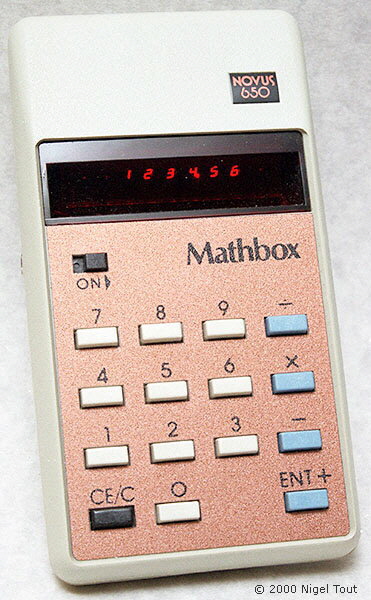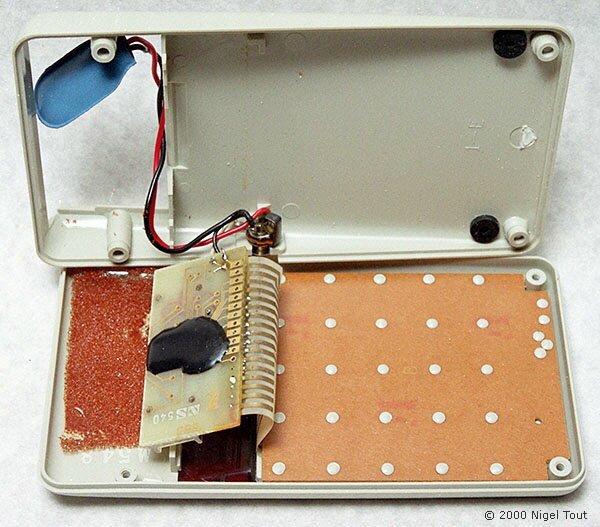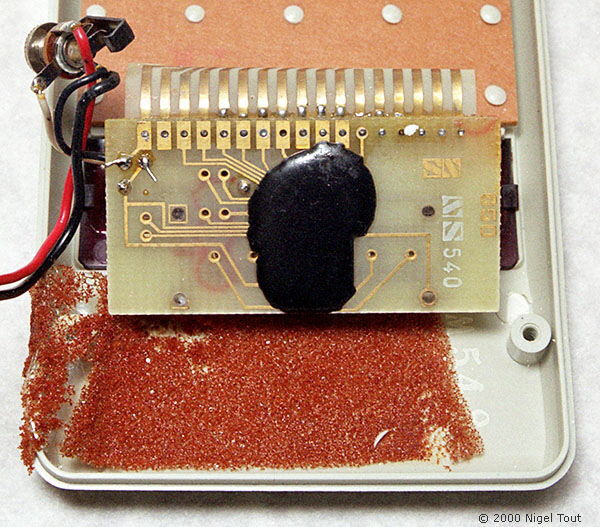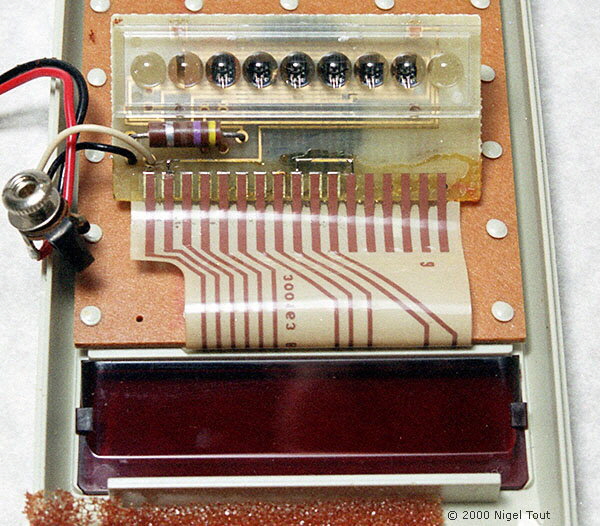Novus 650

Novus 650 "Mathbox"
Distinctive features: Very basic calculator (only 6-digit display and does not have a decimal point key), with silicon chip mounted directly on circuit board.
Technical details:
Display is 6 digits, red LED.
4-function, fixed decimal point (2 decimal places, useful for simple money calculations), with calculations entered using RPN (Reverse Polish Notation, similar to mechanical adding machines) - note the 'ENT+' key and no '=' key.
Main integrated circuit - under blob of resin.
9v (PP3).
69 x 126 x 24 mm. (2.75" x 5.0" x 0.95").
The Novus 650 was announced in late 1974 with a price tag of US$19.95[1].
Made in Malaysia.
for National Semiconductor.
An earlier version of this calculator is known with two integrated circuits in standard dual-inline packages.

Inside the Novus 650 Mathbox, showing the small number of components.

Close up of the circuit board showing the blob of resin covering the integrated circuit chip.

Turning the circuit board over reveals the 6-digit LED display and the rest of the electronic components—a single resistor!
This calculator shows the minimalist approach in order to cut down on the manufacturing cost. Note how few electronic components it uses -
- The display is only 6 digits.
- The integrated circuit is not in a conventional package - it is bonded to the circuit board and protected by a blob of resin.
- It has a fixed decimal point - set at two places of decimals, which is useful when calculating money values - so no "." key is needed.
- It uses RPN (Reverse Polish Notation) calculation entry, so the integrated circuit needs less memory electronics and a "=" key is not needed.
National Semiconductor was a 'vertically integrated' calculator manufacturer, like Texas Instruments and Rockwell, in that it was semiconductor company which produced calculators using its own integrated circuits and LED displays. This meant that the electronics components could be developed to its own requirements, could be supplied at a lower cost, and if there were any shortage then it would supply its own manufacturing first.
An article in the journal New Scientist in December 1976, referring to another calculator in this series, the 852, explained[2]:
"Calculator
technology has just taken one I further step—and pretty near the last— along the road to miniaturisation. National Semiconductor's latest scientific calculator contains no packaged integrated circuit
("chip") as we have come to know it. Instead of using the encapsulated chip—in a dual in-line assembly—the silicon microcircuit in this case is bonded on to the printed circuit
board direct.
This technique has been used for some years now as far as light emitting diode (LED) arrays are concerned. Indeed, National Semiconductor pioneered the mass production of this technique in its latest clock modules.
In the company's new model 852 calculator, the keyboard is the largest component. The actual "works" are smaller than the PP3 battery that powers the calculator. Two chips are bonded on to the board, both housed under the black plastic protecting cap. One contains the scientific calculator functions—the other the drivers for the LED display. The light emitting diodes are also bonded to the same printed circuit board and are protected by magnifying lenses. This type of construction not only cuts costs but also increases reliability as there are relatively few interconnections."
Reference:
Hand-held Calculators
Vintage Calculators
Text & photographs copyright, except where stated otherwise, © Nigel Tout 2000-2025.